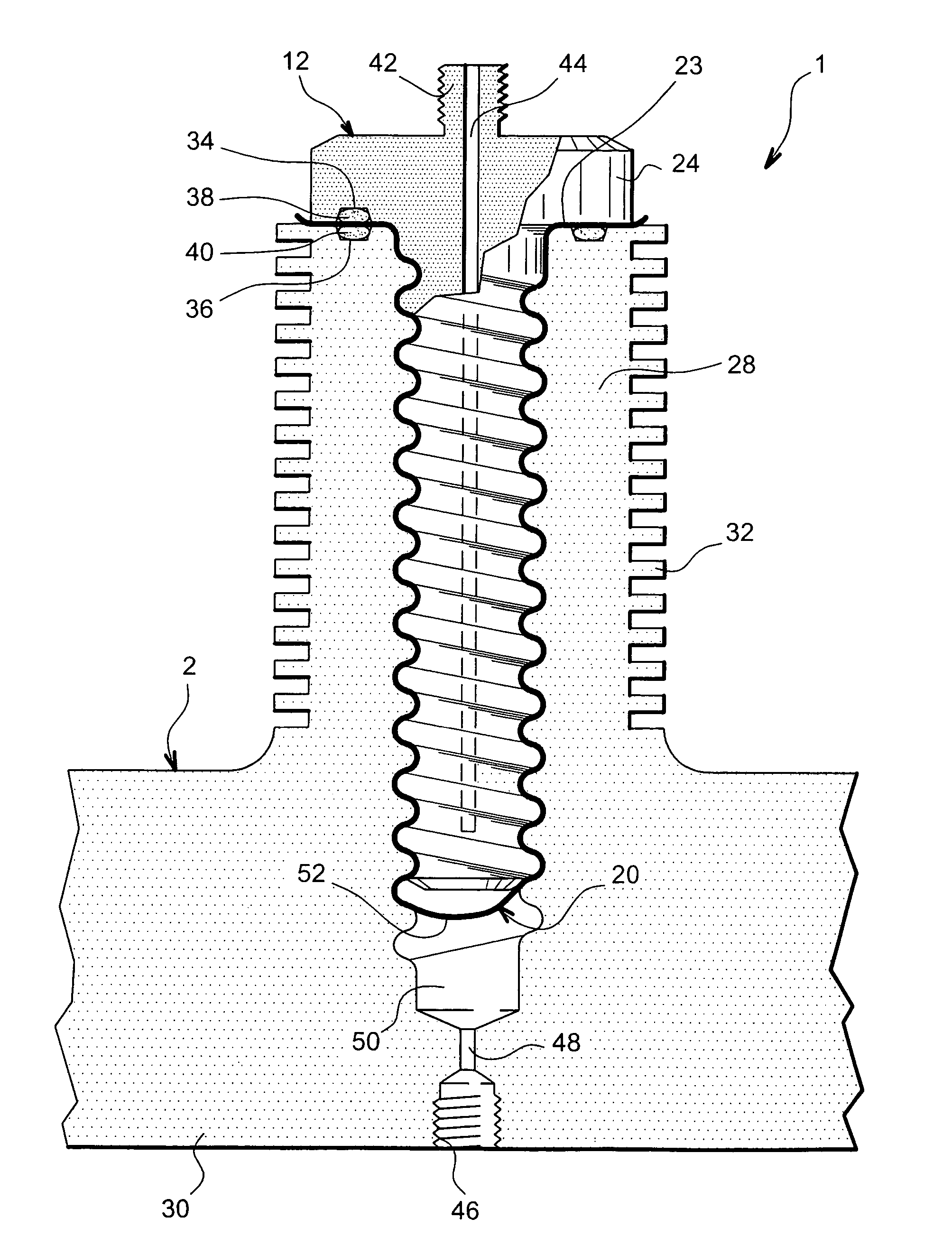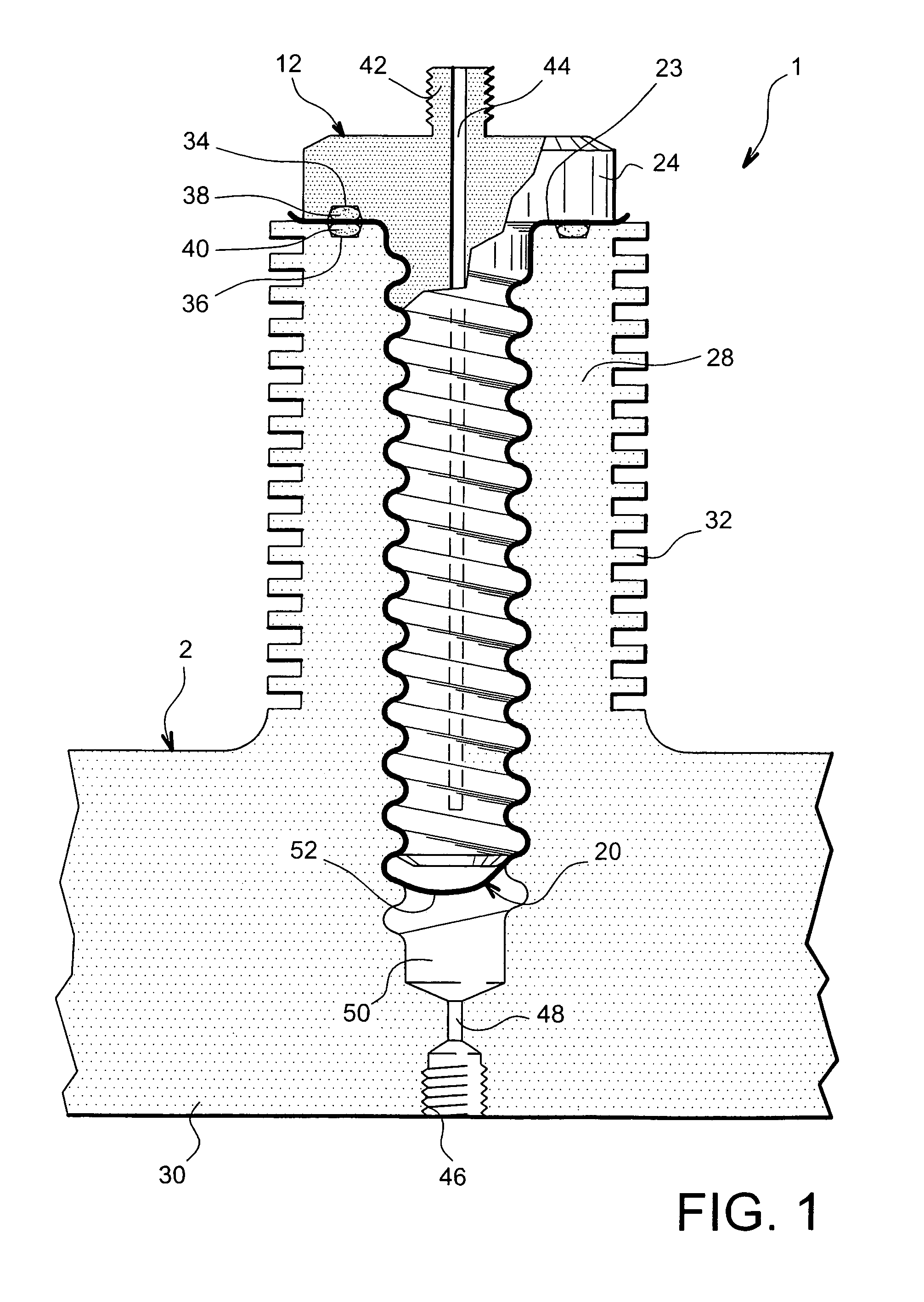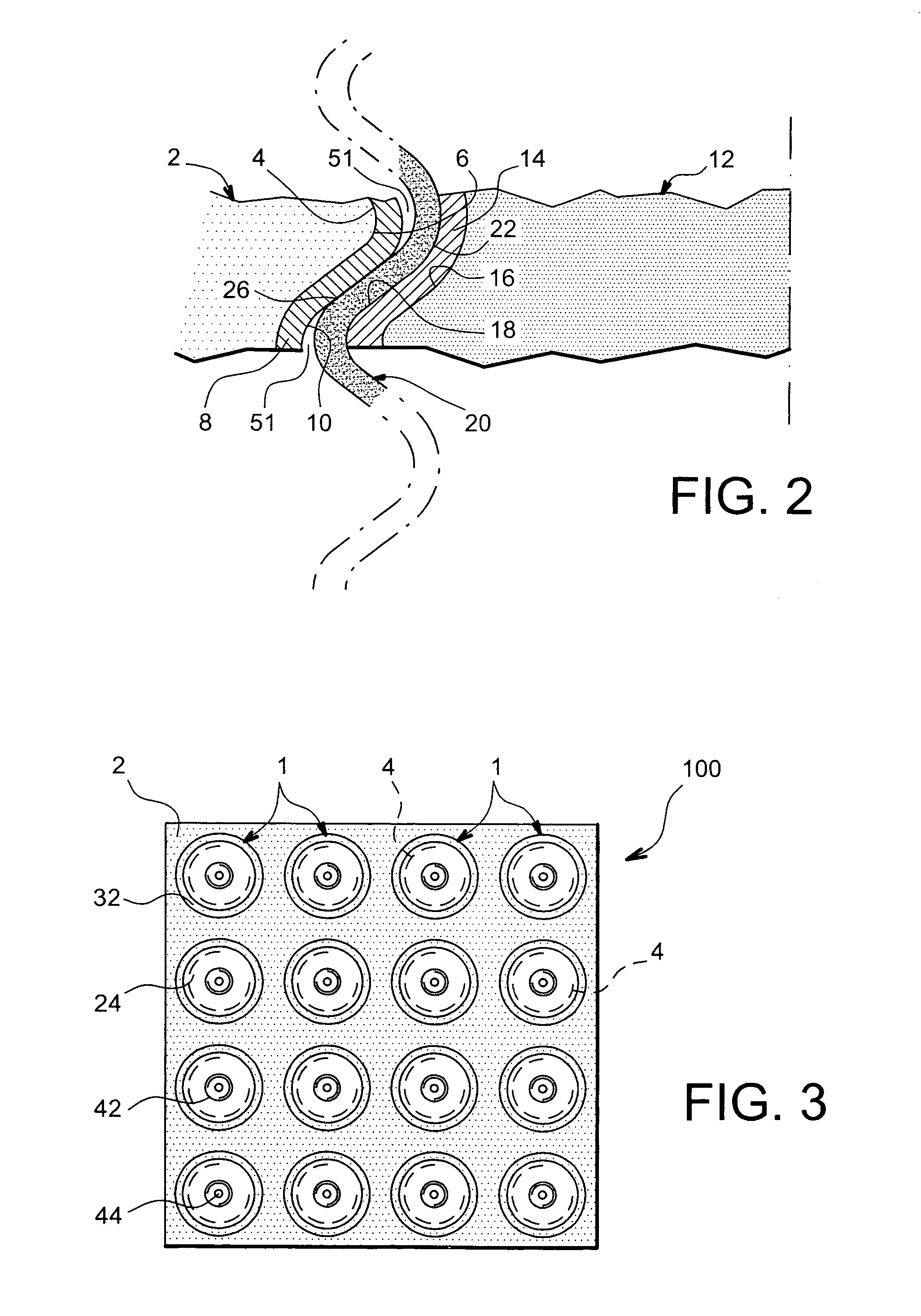Fuel cell with helical structure
a fuel cell and helical structure technology, applied in the field of fuel cells, can solve the problems of short circuiting, deformation of the ion exchange membrane, and reducing the lifetime of the membrane and its associated elementary cells
- Summary
- Abstract
- Description
- Claims
- Application Information
AI Technical Summary
Benefits of technology
Problems solved by technology
Method used
Image
Examples
Embodiment Construction
[0037]With reference to FIGS. 1 and 2, an elementary cell 1 can be seen for a fuel cell according to one preferred embodiment of the present invention.
[0038]Elementary cell 1, able for example to deliver a power of between 10 and 50 kW when forming part of medium-powered fuel cells, may be used in any type of fuel cell such as PEMFC cells nod DMFC cells.
[0039]Elementary cell 1 comprises a substrate 2 preferably made in porous material, in which a nut 4 is formed having a threaded surface 6.
[0040]A first electrode 8, preferably in graphite, silicon, ceramic or metal foam, is deposited in the form of a coating on threaded surface 6 of nut 4, and also has a threaded surface 10 of smaller diameter and identical pitch to threaded surface 6 of nut 4. The first electrode 8 may indifferently either extend over the entire height of threaded surface 6 of nut 4, or only on a portion of this threaded surface 6.
[0041]Elementary cell 1 also comprises a screw 12 preferably made in a porous materia...
PUM
| Property | Measurement | Unit |
|---|---|---|
| power | aaaaa | aaaaa |
| power | aaaaa | aaaaa |
| electrical energy | aaaaa | aaaaa |
Abstract
Description
Claims
Application Information
 Login to View More
Login to View More - R&D
- Intellectual Property
- Life Sciences
- Materials
- Tech Scout
- Unparalleled Data Quality
- Higher Quality Content
- 60% Fewer Hallucinations
Browse by: Latest US Patents, China's latest patents, Technical Efficacy Thesaurus, Application Domain, Technology Topic, Popular Technical Reports.
© 2025 PatSnap. All rights reserved.Legal|Privacy policy|Modern Slavery Act Transparency Statement|Sitemap|About US| Contact US: help@patsnap.com



